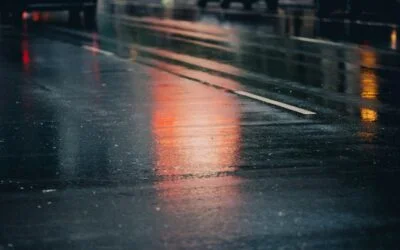August roadwork across Georgia brings lane shifts, narrowed shoulders, and sudden slowdowns that catch drivers off guard. Work zones around metro Atlanta, interstates, and suburban corridors tend to peak before Labor Day, which means more rear-end collisions, side-swipes during merges, and crashes involving construction vehicles. If you are hurt in a construction zone crash, understanding how fault works—and what evidence matters—can make a major difference in your personal injury claim.
Construction zones are uniquely hazardous because traffic patterns change without much warning, lanes are reduced, and drivers are forced to merge under pressure. Nighttime paving projects add low visibility and glare from work lights. Add distracted driving, speeding, and tailgating, and it’s easy to see why late-summer work zones produce serious injuries ranging from concussions and whiplash to fractures and traumatic brain injuries. Pedestrians, cyclists, and roadside workers are also at heightened risk when temporary barriers are missing or signage is confusing.
Georgia uses a fault-based system, so liability turns on whether a driver or a roadwork contractor failed to use reasonable care. A speeding or distracted motorist who rear-ends a stopped vehicle in a lane closure is typically responsible for resulting injuries. But a contractor can share fault if the site lacked proper warning signs, taper lengths, crash cushions, or nighttime lighting required by accepted standards. In some situations, multiple parties—including subcontractors or a trucking company hauling materials through the zone—may contribute to the crash. Sorting out who is responsible requires quick, careful investigation.
If a construction zone crash occurs, focus first on safety and medical care, then lock down evidence before the work configuration changes.
Steps to take after a construction zone crash
- Call 911 and request medical evaluation. Even if injuries seem minor, get checked and follow all care instructions.
- Document the scene thoroughly. Photograph lane closures, cones, arrow boards, message signs, detours, skid marks, and lighting conditions. Capture wide shots and close-ups.
- Note the work zone setup. Record sign locations, lane shift points, taper length, and any missing or knocked-over devices.
- Collect witness and contractor info. Get names, phone numbers, subcontractor trucks on site, badge numbers for flaggers, and equipment identifiers.
- Secure video sources. Ask nearby businesses, dash-cam drivers, or your own device for footage; roadwork layouts can change within hours.
- Avoid recorded statements to insurers. Do not speculate about fault until you’ve spoken with a lawyer.
Common damages in construction zone collisions include emergency care, hospital and follow-up treatment, physical therapy, lost wages, reduced earning capacity, and pain and suffering. If reckless speeding or impairment contributed to the crash, punitive damages may also be available. When contractors are involved, additional commercial insurance policies can increase the total coverage available—if you identify them early and preserve the right evidence.
Gunn Law Group moves fast after work zone crashes to photograph the site before it changes, obtain maintenance-of-traffic plans, secure contractor logs, and interview witnesses and workers. We build your case with medical records and expert analysis of the temporary traffic control setup, then negotiate with every responsible insurer to pursue maximum compensation. Our job is to handle the paperwork and the pressure so you can focus on healing.
If a construction zone collision has upended your August, don’t navigate the process alone. Call the Big Gunn at 888-BIG-GUNN for a free case review with an Atlanta personal injury lawyer who knows how to win complex roadway claims.




